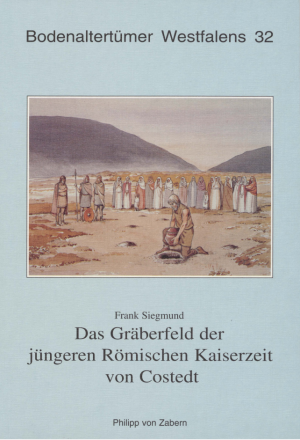Krabath, Stefan
Das Gräberfeld der jüngeren Römischen Kaiserzeit von Costedt
In 1989, the Westfälisches Museum für Archäologie conducted a study of a burial ground in Porta Westfalica-Costedt with 44 graves dating from the early Roman Imperial period. A few urn graves were discovered, but the most common forms of burial were cremation graves, cremation patch and bone nests. Such variants are common in the Rhine-Weser Germanic region.
A relatively large number of garment buckles in the form of 15 fibulas were found at the burial ground, ceramic is the most common category of archaeological finds. Several graves contained Roman import products; a Roman disc fibula, terra sigillata, along with remains of Roman bronze vessels and glasses have been identified. The existence of a local ruling class can be deduced from the burial gifts of Roman import. On viewing these objects together, it is evident that two courts shared the same burial ground, one of which was for three generations recognisably richer than the other.
The site was analysed as part of two exercises at the Seminar for Prehistory and Early History of the Georg-August-University Göttingen from 1992 to 1994.







